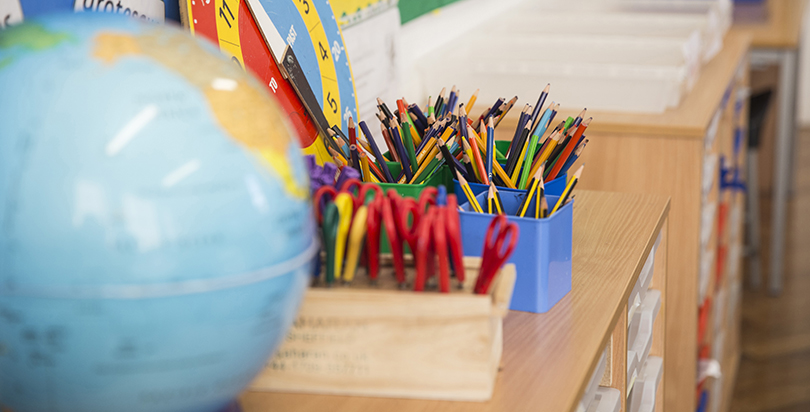The 74 is moderating a panel Wednesday at the 24th annual California Charter Schools Conference in Sacramento, about inaccurate narratives surrounding public charter schools and how the mainstream media covers, and occasionally distorts, the sector. (Livestream will start here at 1:45pm EST.) Ahead of the event, all four participants have published new essays on this topic; read them all here. Get our latest media fact-checks straight to your inbox; sign up for The 74 newsletter.
Teachers unions supported charter schools before they opposed them, but when they turned against them, they turned hard. Their massive effort to discredit charters over the past decade has generated a lot of heat and little light, but on occasion decency compels a response to a false charge.
One of the most frequent is the idea that charters educate a smaller percentage of students with disabilities — an allegation that implies discouraging such students from applying, pushing them out, not knowing how to help them the way traditional schools do anyway, and keeping it all secret.
The underlying idea is that charters are at heart indifferent to children and that their success relies on illicit cherry-picking of high achievers.
Earlier this month, Michael Mulgrew, president of New York City’s teachers union, assailed charters for lack of transparency by alleging, about co-located schools, “These schools may share a building, but the public school will have three times the number of special education students and four times the number of homeless children as the charter school.”
This isn’t just politicking, it’s bad faith.
Let’s acknowledge straight off that in New York City, as in most districts, for reasons we’ll touch on in a moment, a higher percentage of students with disabilities do attend traditional schools — though the gap is closing. (We’ll leave the tragedy of homelessness for another time.)
Mulgrew’s characterization is less an observation than a schoolyard boast — a taunt that appeals to stereotypes, perhaps widely held by his supporters, of public schools as tenements and charters as country clubs. And students with disabilities as a burden.
Let’s say a few schools sharing buildings somewhere in the vastness of New York (or Houston or Los Angeles) have a population imbalanced in this way; what’s the point? Is Mulgrew aware there’s a co-located building in East Harlem where the charter has more than three times as many students with disabilities as the traditional school? Unlike the union president, who feels unobliged to support his claim, I’ll tell you who the schools are: the traditional one is PS 50, where 30 percent of the student population receive services. (That’s a very high number, by the way; while we don’t know the situation here, there’s also a long and inglorious history of traditional schools pushing out or turning away students with disabilities.)
The charter school has a much greater percentage of these students — despite its supposed aversion to teaching them — because it happens to be a branch of the NYC Autism Charter School, designed solely to meet explosive growth of children diagnosed as autistic.
Mulgrew and union leaders would prefer that arguments about charters remained theoretical, or traded on a market for outliers and anecdotes, because even if unions lose these kinds of arguments, they succeed in distracting from what’s actually happening: a body of evidence establishing irrefutably that charters in many urban areas outperform the schools next door by margins of growth rarely seen in education research.
So let’s argue from the evidence. As for New York and its 107,000 charter students, here are some facts compiled by the New York City Charter School Center:
-
In New York City, 19.2 percent of students have disabilities, as do 18 percent of charter students. So much for the difference Mulgrew characterizes as “three times” greater.
-
Of 216 city charters, 54 enroll more students with disabilities than the citywide average.
-
Dozens more will join these schools: The percentage of students with disabilities enrolling in charters increased by a third between 2012 and 2015.
To be sure, charter schools, especially new ones, don’t necessarily have the teaching resources or physical footprint to educate every student, especially new ones. Hence the stickiness of the unions’ claim. But neither do traditional schools. Or any schools. If we couldn’t innovate until we were prepared to address every need, we would never innovate.
What’s clear, thanks to Marcus Winters’s study of enrollment patterns in New York and Denver, is that past gaps in special education enrollment between traditional and charter schools weren’t a result of unwillingness by charters to provide SpEd, nor did they primarily concern students with severe disabilities.
Among other reasons, Winters suggests a significant factor may have been parents wanting to keep kindergarten-age children with speech and language issues in traditional schools so as not to interrupt the services the district was already providing.
Once children with disabilities do enroll in charters, however, they’re more likely to remain in that charter than their peers in traditional schools, New York’s Independent Budget Office found in a 2015 study of 10,000 students. They’re also more likely to be declassified out of special education, and they perform better on assessments.
Myths die slowly. Teachers unions successfully stoked poorly considered concerns about “privatization” to crush a Massachusetts measure that would have allowed more poor children to attend Boston’s spectacularly successful charters, for instance.
But when the percentage of students with disabilities enrolled in charters draws even with those in traditional schools, when these children want to stay in their charters more than their peers want to stay in traditional schools, when their disabilities are being overcome more successfully in charters, and when they are learning more and performing at a higher level, why in the world is the myth of charter unfriendliness to special education still around?
Get stories like these delivered straight to your inbox. Sign up for The 74 Newsletter


;)
